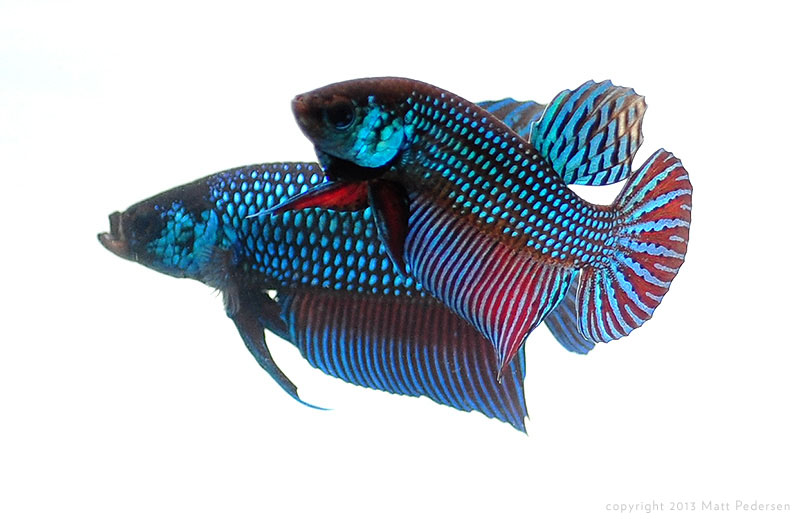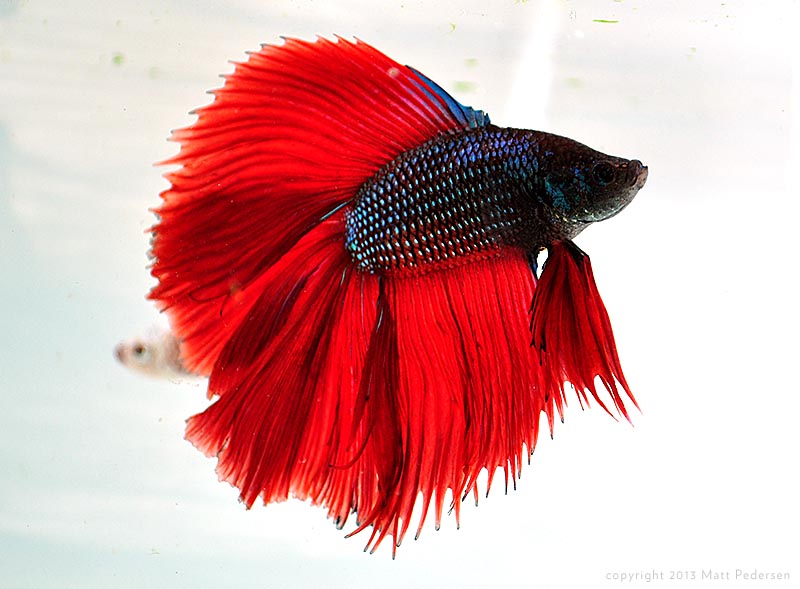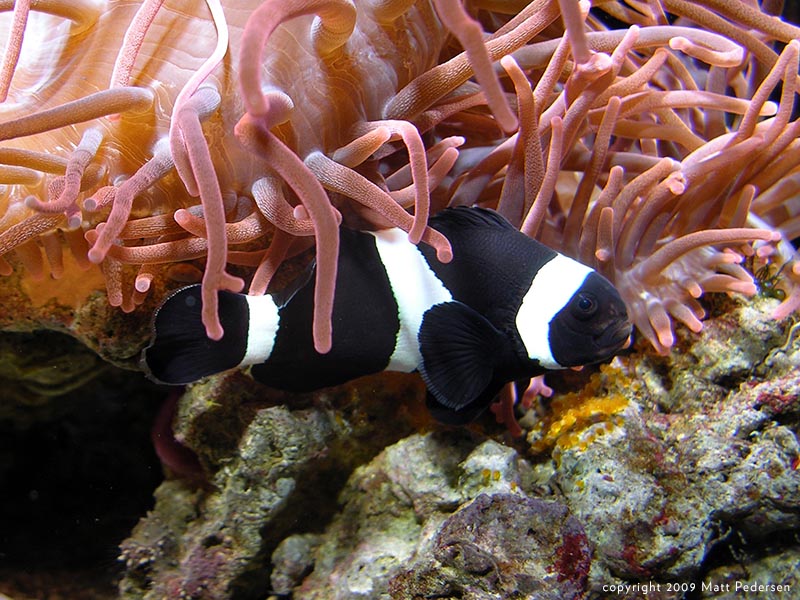We recently received a comment (at the end of this unrelated article) in response to my review of the Deep Blue Professional Betta Aquariums; the crux of the concern being “these tanks seem small.”
There is no shortage of debate over how “small” a tank is acceptable for Bettas, and the comment was a welcomed inspiration to jump off and examine the issue for myself. A very interesting body of evidence, in the form of videos of betta collection in the wild, really forces us to think critically about their space requirements.
One of the talking points that continues to crop up is whether Bettas, in their natural habitat, truly “live in puddles” or not. Generally speaking, those that believe that they “live in puddles” (or my personal favorite, the hoof print of a Water Buffalo), cite this as a free pass to keep bettas in cups of water. Others counter the “puddle” argument by saying “rice puddles” (aka. rice paddies) are not small, but huge ponds of water, perhaps several feet deep. Before I get to the wild betta videos, let’s think this through.
Understanding the Domestic Betta
First we have to understand the Betta that most folks are talking about. The are certainly not wild fish like the ones pictured above; they are ornamental, domestic forms, usually labeled as Betta splendens, but potentially a hybrid mix of more than one species, derived from potentially hundreds of generations of captive-breeding (generation times on Bettas can be as little as 3 months).
The volume of water afforded to individual domestic bettas in the countries where they are raised has been cited down to as little as 4-8 oz. of water. Males in particular are segregated at a very young age to prevent fighting and allow for good fin growth. Generally speaking, males are only given larger quarters when breeding.
Bettas in commercial settings are often segregated into endless fields of glass jars, workers walking on the containers themselves. Live foods are used which help prevent fouling the water.

Screen capture from the video below: Betta feeding time at Aquastar 71’s hatchery operation – aquarist literally stands on the bottles housing fish, feeding each bottle with live feed, one at a time.
Water is presumably changed very frequently, at times with very ingenious and simple setups that allow jars to be filled and simply overflow, refreshing the contents inside.
A look at the Aquastar 71 hatchery in Thailand provides insights into exactly how this process works; start the video below at 1:40 if you want to see the bottles in action.
Another great look at betta farming is presented in a German-language documentary by AquaNet.tv. This video isn’t available in full on Youtube, so we’ll ask you follow the link to see it. Start around 2:40 mark to see the endless fields of glass bottles and how they’re put into practice.
Framing the Tank Size Debate
By comparison to the endless fields of bottles seen above in Thailand, the aquariums I reviewed afford the fish far more space. Regardless, these unfiltered aquariums do require routine large water changes to control waste, and thus aren’t for everyone, particularly the lazy fish keeper.
We can certainly debate the question “what is the minimum aquarium size needed for a Betta?” In truth, there really isn’t a black and white answer. Obviously there is a true “minimum”. . . eg. the fish must be able to move and turn around and such…but to try set a strict baseline minimum like “2.5 gallons” is arbitrary and akin to the mythology of “1 inch of fish per gallon” when trying to come up with stocking guidelines for an aquarium.
We must avoid anthropomorphism when examining this question, as none of us can truly ascertain a fish’s “emotional state.” I don’t think any of us is truly in a position to determine whether a fish’s existence is “bleak” or otherwise, particularly from the viewpoint of the fish. That determination is the projection of our own consciousness onto a fish. You are welcome to empathize with a fish of course, but realize that they fish may well completely lack the perceptions and emotions you’re attributing to it. I can concede it is possible that a fish can perceive its life in a glass box is a “bleak” existence, but my personal viewpoint, tempered through decades of aquarium keeping, suggests this is not likely.
Instead, science probably gives us the better mindset to address this question. We can observe a fishes’ health, behavior and longevity, and weigh that against the husbandry provided by the caretaker. This is why a Betta farmer in Thailand might well say that 4 oz of water per fish is PLENTY, whereas a beginning aquarist in the western world who’s averse to doing frequent water changes and views a fish as decoration would need a 5-gallon aquarium with filtration to provide a buffer against inexperience and less intensive husbandry techniques.
Space Requirements as a Function of Biology – What We See In The Wild
But all these views now stated, I must circle back to the start and apply the insights we gain from observing the fish in the wild.
First, an example – the marine clownfish. Some might argue that clownfish on a reef have “the whole ocean” at their disposal, and thus putting them in a 6-gallon Nanocube is torture….
Sorry, no. Why?
When you consider that wild clownfish, particularly the smaller species, may almost never leave the anemone they call home, you realize that they don’t use “the whole ocean” nor do they need it. They may need only one square foot or less space to be plenty happy in captivity…never-mind those that were born in captivity from day one. Simply put, their biology and natural behavior determine their true need for space. Which is why I had no problems keeping and breeding my Black Ocellaris clownfish in a 6-gallon nanocube for years (their Red Bubble Tip Anemone host ultimately growing to fill virtually the entire tank).
And like the clownfish, we must examine the nature of a Betta, particularly the male. We realize they are territorial but also site restricted, by choice. While they may live in vast fields of rice that may well include acres of water and be quite deep in some spots, the bettas themselves might never move more than a few inches away from their bubblenest. Ultimately, while there may be vast spaces of water available to the fish, the bettas aren’t actually utilizing these expanses of water.
The Proof Is In The Videos – A Clear Look at Splendens-type Bettas In The Wild
A really good example that brings this point home is seeing how the species Betta mahachaiensis lives in the wild. Males literally spend much of their lives in the bracts of palms…tiny pockets of space and water. Check out this video of hand collecting Mahachai Bettas; pay close attention to the actual spaces where the collectors are seeking and finding these fish.
https://www.youtube.com/watch?v=1IbjCEOBWyE
Next up, collecting Betta smaragdina; this video doesn’t show the actual act of scooping up the fish, but what it clearly illustrates is the process of locating the wild betta by looking for their bubblenests. Take note of the amount of water and space around that nest, and realize that there is a male fish right underneath it..which is easily scooped up (plenty of “eye candy” showing wild Smaragdinas after they’re caught).
https://www.youtube.com/watch?v=BIZFPWC1kzM
Consider the weed choked pond in Thailand where we watch the collection of wild Betta splendens (generally the species assigned to our domestic form).
https://www.youtube.com/watch?v=d38Lo3T3fJI
I’m not sure the species shown in this next video; it looks like B. smaragdina again. While the video is terribly out of focus when in close, it’s amazing to see how “small” everything really is. The first bubblenest you see in the video actually looks like it has a lot of space around it…until you see the size of the collector’s hand as it engulfs everything you see in the frame.
https://www.youtube.com/watch?v=XDULox2M8Mk
Sure, bettas can be found on larger water bodies too. Check out the collection of Betta imbellis (and note where exactly the fish are sitting when they’re collected):
So What Do Wild Bettas Tell Us?
Clearly, the wild betta, in its natural state, does not have a large demand for space. It truly is site restricted by choice or instinct, and lives in heavily structured and therefore somewhat confining spaces. Consider that these bettas spend most of their lives hiding in a thicket of vegetation, probably often nestled in direct contact with the leaves and detritus around them (while that might make you claustrophobic, this is what Bettas do). They are not active swimmers, darting back and forth, either. Given these observations, I think the wild observations clearly support the “puddle” notion of their existence.
So ultimately, when we ask: What’s the minimum tank size for a betta?, there isn’t a firm answer (isn’t that the norm in the aquarium hobby?). Even among experienced breeders, there is no absolute agreement, and for each betta keeper there is only a private, personal accountability to what we feel is ethical and makes common sense. I do believe it’s fair to say that these fish may well only need a “puddle” of water, as evidenced by the videos of these fish in their native, wild habitat.
However, even though the wild forms of the species live in potentially tiny spaces, and the practice of breeding bettas has produced animals that flourish in truly small bodies of water, there is a maintenance requirement that comes with such a small volume of water in captivity. Still, to say that housing bettas in small spaces is unnatural would seem to be misleading as demonstrated by their wild behavior and habitats. To say that housing bettas in small unfiltered aquaria is cruel is a wholesale generalization—for bettas, it appears clear that small aquariums are only “cruel” when proper husbandry isn’t provided.
So if you’re unable to provide the routine husbandry required or if you’re inexperienced, it is obvious that a tiny, unfiltered tank isn’t appropriate for you. And certainly if you feel that a typical “Betta splendens” requires a larger tank, by all means please do furnish one. This is not to say that I encourage our readers to give their bettas the “smallest tank possible,” but to simply acknowledge that small spaces do work, in the right hands, with proper care, and the fish most certainly will be healthy and, with a little bit of snark, I dare say they may even be “happy”.









Well said, Matt. My observations of wild Bettas on the Thai/Laos border indicated that they show very high site fidelity and during the start of the rainy season were found in rice fields in less than 2-3″ of water. I never saw any in deeper water in the irrigation ditches next to the fields, even though they could easily access those larger bodies of water. If you want a laugh, check out PETA’s “expert opinion” on the cruelty of keeping a betta in a small aquarium. Concluding, of course, with “please don’t buy a betta fish or support stores that sell betta fish”. http://www.peta.org/issues/companion-animal-issues/cruel-practices/betta-fish/
just wanted to mention how nicely written this was with various examples of Betta in the wild. Here in Singapore we have one native species, B. pugnax, and the conditions it lives are exactly the same as you describe. It can only be found in forest streams here, but those “streams” are more often just puddle of stagnant water filled with decaying leaves. We experienced a rather dry spell recently and I was just lamenting to my friend yesterday how dry the swamp forests were, but not surprisingly, the pugnax were unphased and happy even, swimming in their pools of foresty-water.
I have seen B. pugnax in some of the deeper forest ponds, up to maybe 6-7 ft deep, but have only observed them swimming near the surface, at the edges where grass and other plants spill over into the water. They are rarer in the deep ponds, but are always common in the stagnant and shallow streams and drains that run around the forest paths. no more than 10 inches of water sometimes!
unfazed*
Very nicely written. My only concern is that people will invariably skim it and think you have proven that small tanks are okay. They won’t catch where you point out that small tanks require more care.
I find that when people state that its anthromorphizing to attribute feelings to an animal researchers invariably come along later and prove that said animals do indeed share these emotions with us. We’re all more alike than we humans want to admit..
That said, when I released my Thai import from his tiny shipping prison into a 5g planted tank he did the nearest thing to a celebration I’ve ever seen. He soent a good 3 minutes zipping from end to end & then a long time after cruising & exploring every corner & plant. They can live in a puddle or barren breeding tank, but they certainly take full advantage of larger quarters. My other 3 also live all over their 5g tanks as well. Just because you can do something doesn’t mean you should.
I have two male Betta fish. One is in a 20 gallon tall tank with many platy fish and one female blue Gourami fish. The other male Betta is in a 55 gallon aquarium with five male platy fish and one female blue Gourami fish. Both of my Bettas enjoy using the whole area of their aquariums and are rather active. I have a lot of plants in both tanks. One male likes to rest in the floating plants and the other prefers the bottom of the tank. I started off each Betta for a while in a two gallon jar until they were use to that and looking great, then I put them in to a larger home. They are more active in the larger area but seemed healthy in both sizes – small and large.
I have owned Bettas several times through out my life. In my experience you can tell when your betta is happy, he will make a bubble nest. My current Betta was a gift for my birthday this past Febuary from my aunt and grandmother. He has had 3 homes not counting the cup he came in from the dollar store he was bought at. His first home was one of the small “traveling” rectangle plastic things with a palm tree. He stayed in there for about a week until I was able to get him a 1.5 gal “gumball” aquarium. He had plenty of room to move around along with gravel and plants. I changed the water partially every other day. I kept in that tank until about 3 weeks ago. I was able to purchase a brand new 5.5 gal tank set up from someone for $10. I purchased extra gravel, a 2nd betta bed, heater ( i like my bedroom freezing for sleeping temp), live and fake plants. This is how I know my betta is happy. He has made a bubble nest.! In his gumball he never even game close to making one. Even with my past bettas when they were happy they made nests. Granted this is MY experience. and I have owned 10 bettas through out my life plus countless other fresh water tanks.
I would say use your fish as your guide for his home. Some Bettas may never make a bubble nest.
One Betta I had when I was 20, I had to take him from his large home 5 gal, and give him a smaller one. Why? because the tank was leaking and he needed a new one. He always had a nest. But in the smaller tank which was 2 gallons, he was in there for about 2 months, not once did he make a bubble nest. when I got in him back into his large home…..bubble nest.
PLease remember each fish is an individual, what one may like another may not. Its way I say let your fish guide you.
It always made me sad to see people equate a betta’s happiness with bubble nests! They really do not mean a fish is happy. They are purely a sign of sexual maturity and a readiness to breed!
This was a well written and interesting article but I do have some points of consideration that might temper some discussion. I do feel that the videos of catching the wild betta might not be the best way to examine typical betta behavior, given the fish are in a more potenially stressful situation and are acting in response to it. Also domestic bettas might not show the exact same behavior that the wild variety might and may be potentially healthier and seem more satisfied in a larger tank. I have no experience with the wild betta but my domestic betta is an energetic swimmer with a curious nature. I feel that any fish that is naturally inclined to only dwell in a small area wouldn’t move around their living space as vivaciously as he does. He has plenty of places to hide in if he wanted too, but he seems inclined to patrol all of his tank, I am not sure that I can write that off as an anomaly it not some aspect of his instinct.
I agree with Paige that videos of bettas being caught do not necessarily represent their natural behaviour. We saw some bettas swimming in the bracts of palms – a good sheltered spot, easy to defend. They certainly don’t spend their entire lives in the one palm though. If they did, how would they breed, and how would juveniles find their own territory? How would we know how many bettas were swimming in the spaces between the palms? I am a SAHM and spend many of my waking hours in my open plan living/dining/kitchen space. It doesn’t follow that I can be kept in such a space for the rest of my life without adverse effects on my mental and physical health.
Also, do we know in which season the videos were filmed? In the dry season there will obviously be less water for the fish to inhabit, but that doesn’t mean that less water is their preference.
In any case, the habitats appeared to me to be very wide, although crowded with plants. You appear to believe that only water free of plants counts as ‘space’ – I doubt very much whether fish see it that way.
As for anthropomorphism, while I too doubt very much whether ‘bleak’ is a concept that a betta can understand, I don’t think it’s unreasonable to infer from a betta’s behaviour that it is capable of feeling stressed, curious, and, if not happy, at least content.
In short, I don’t see that you’ve proved anything.
I realize I’m replying to a 6 year old comment on an 8 year old article… oh well.
We *do* know that they prefer these smaller spaces vs larger ones because researchers have studied it. Open water=danger, we think of Bettas as these macho predators, but a lot of their behavior is the behavior of prey animals. They’re vulnerable to predation from much larger fish in deeper water and from birds in exposed water.
They really do spend their time in tiny spaces, especially when they have a bubble nest. They will typically occupy a maximum area of 1 square meter, between 2 and 6 inches deep. They’ll find their territory essentially from the point of sexual maturity, and they’ll only leave it when forced out of that area by predators, animals, habitat loss, etc.
Females are very different, they travel much more than males and come into contact with other fish more often. If they were as aggressive, the species would never continue (and there’s evidence that even males weren’t *as* aggressive as modern male bettas until humans started breeding them for fighting, including wild populations since often captive bred fish were released back into the wild).
The point about whether the videos were filmed in the dry season or the wet season doesn’t make too much difference, and for what it’s worth I’ve seen both. The point is that they *have* options in their environment and they *choose* small patches of shallow water. That is their choice.
Anyways, carry on
This was extremely well written, I’m impressed! Thank you for the article.